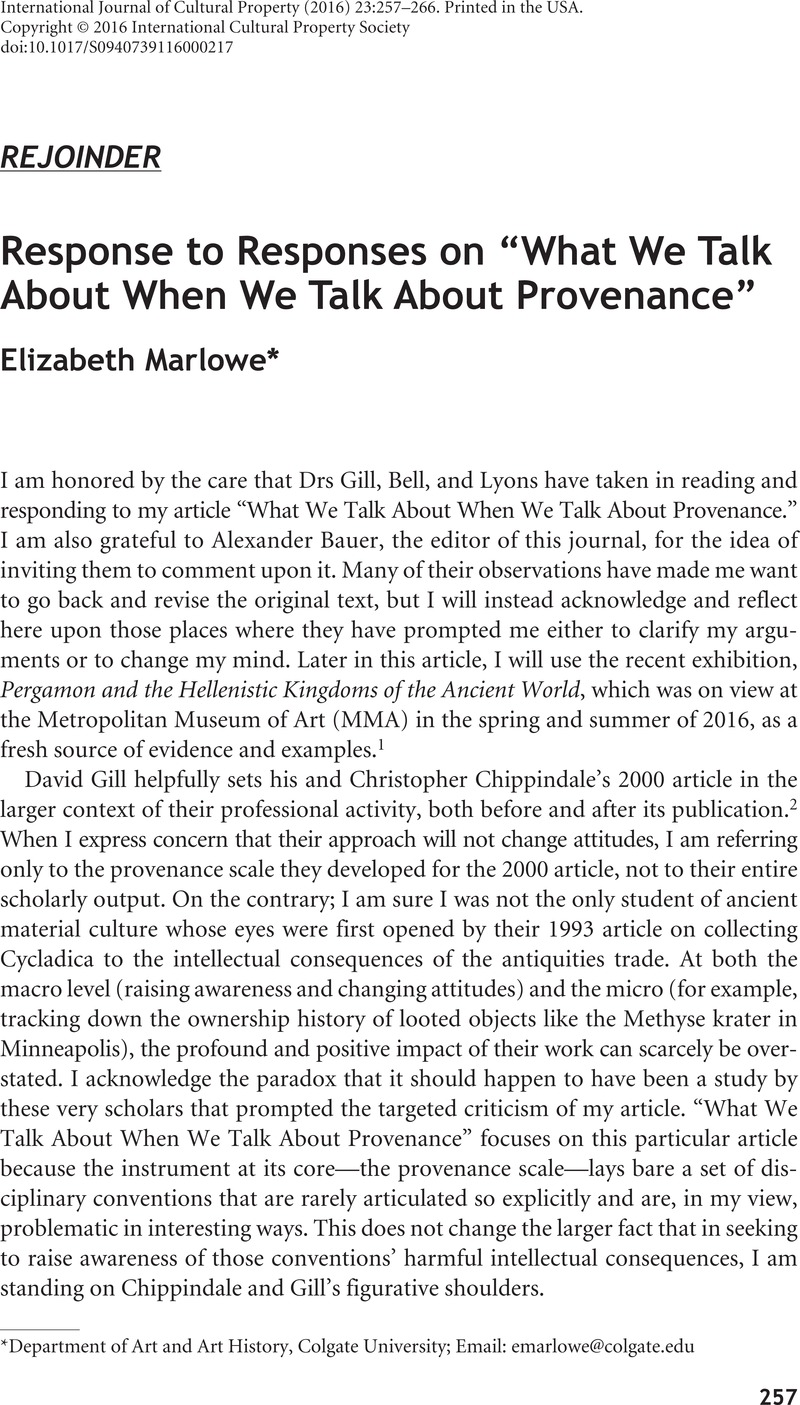Crossref Citations
This article has been cited by the following publications. This list is generated based on data provided by Crossref.
Walsh, Justin St P.
2017.
A Silver Service and a Gold Coin.
International Journal of Cultural Property,
Vol. 24,
Issue. 3,
p.
253.
Gill, David W. J.
2019.
The Palgrave Handbook on Art Crime.
p.
797.
Buchanan, Sarah A.
2023.
Envisioning networked provenance data storytelling with American cuneiform collections.
International Journal on Digital Libraries,
Vol. 24,
Issue. 3,
p.
149.



